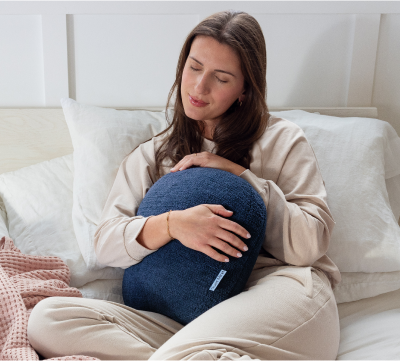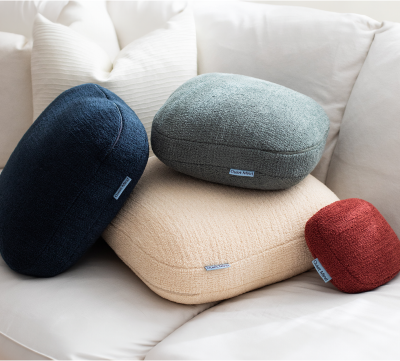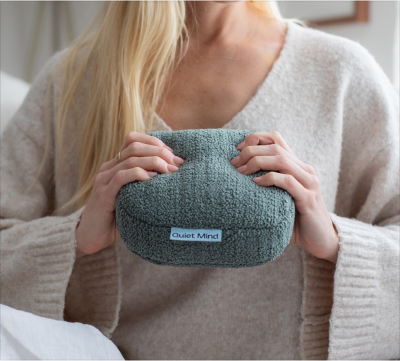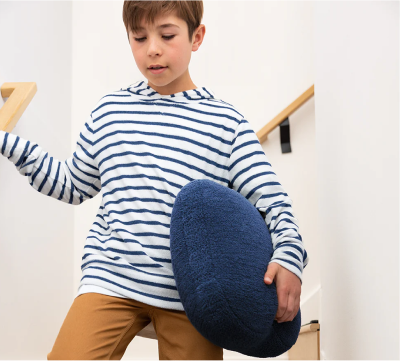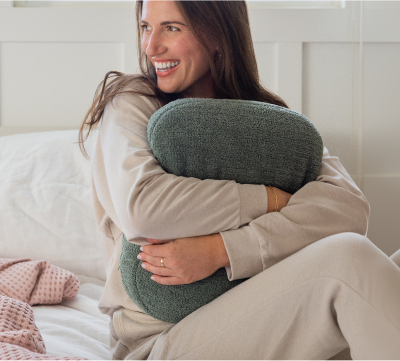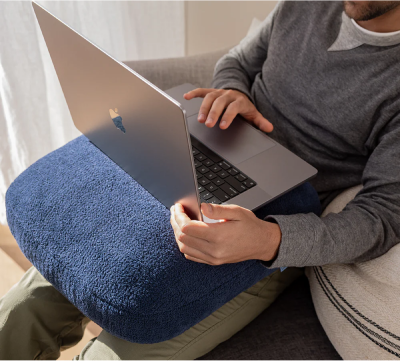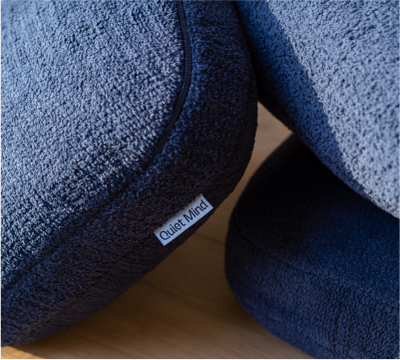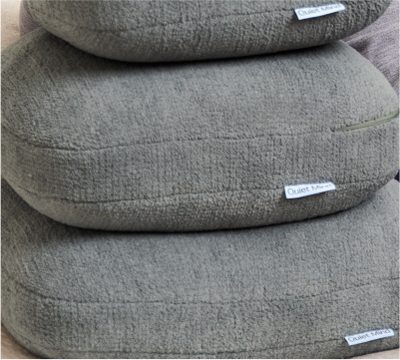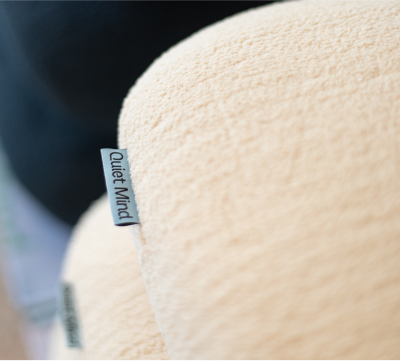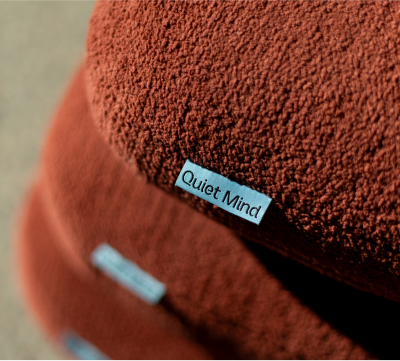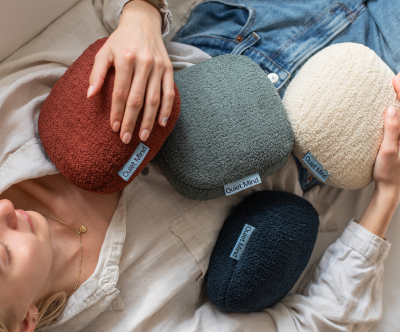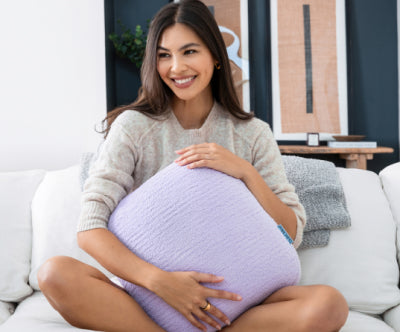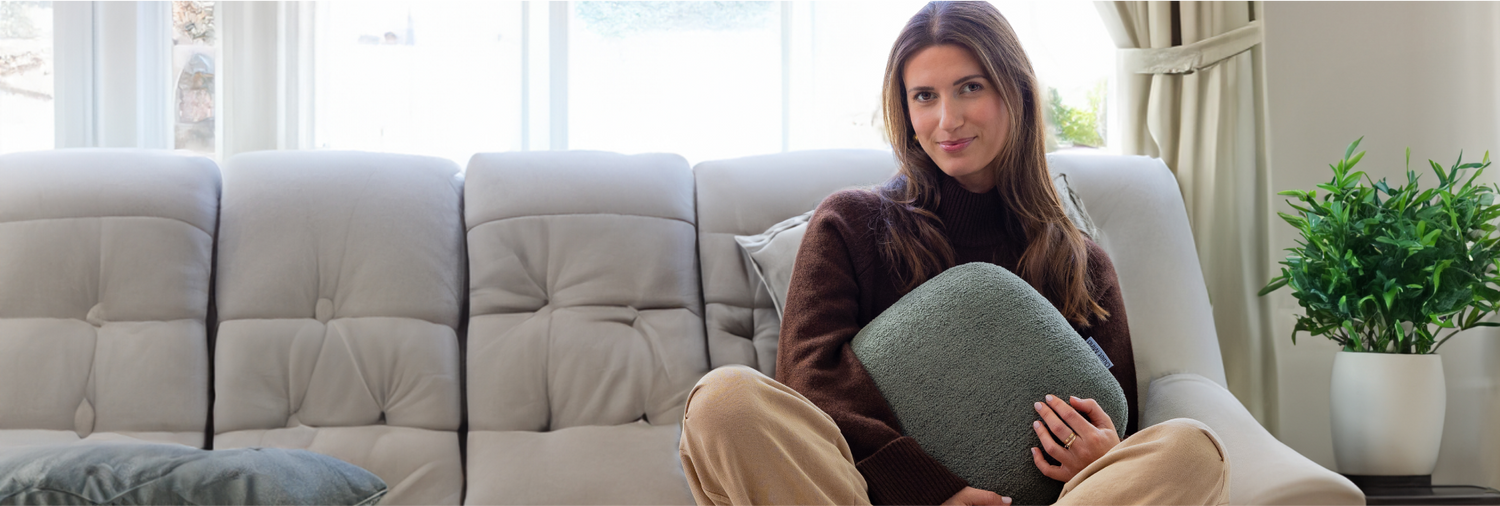Getting a child to go to sleep and sleep soundly is a challenge every parent faces, and most parents are on the lookout for ways to make the process easier. As the popularity of weighted blankets has grown, many parents may be tempted to give them a try.
Weighted blankets for kids are blankets filled with materials like beads or pellets designed to add extra weight and apply pressure to the body. This pressure, known as Deep Pressure Stimulation (DPS), has a calming effect that may help some users fall asleep faster, sleep longer, or wake up less often.
The catch is, in order for a weighted blanket to be effective, it needs to be heavy enough to provide the pressure required to induce a calming effect. Therefore, most weighted blankets weigh between 5 and 30 pounds, which is much heavier than the average comforter or blanket.
This leads to the obvious concern: Are weighted blankets safe for kids? Here are some things you should know before trying a weighted blanket for your little one.

Are Weighted Blankets Safe for Kids and Toddlers?
According to experts, weighted blankets are not safe for kids under the age of four, including toddlers and babies, or any child who weighs less than 50 pounds. If your child has breathing difficulties, sleep apnea, type 2 diabetes, circulation problems, or developmental delay, they should not use a weighted blanket.
Some children may also find weighted blankets to be too restrictive or claustrophobic. As a general rule, it’s best to consult with your pediatrician before purchasing a weighted blanket for your child. Let’s take a deeper look at what makes weighted blankets unsafe for kids to help you make an informed decision.
Risk of Suffocation or Breathing Difficulties
Babies, toddlers, and young kids may not have the strength or ability to move a heavy blanket if it covers their face. This can lead to breathing difficulties and an increased risk of suffocation.
Risk of Entrapment or Strangulation
Babies and small children can become trapped underneath a weighted blanket if they move underneath it during sleep. This can increase the risk of entrapment, injury, or strangulation, especially in babies, young children, or children with developmental delays who may not be capable of calling for help.
Potential for Overheating
Weighted blankets can cause overheating, especially in very young children who are less able to regulate their body temperature effectively. The added weight and insulation of the blanket trap heat against the body, which can cause the user to become too hot. This leads to overheating and increases the risk of heat-related illnesses like heat exhaustion or heatstroke.
Restricted Movement
Weighted blankets can restrict freedom of movement, especially in young children or children with impaired mobility. This can interfere with their ability to roll over or change positions during sleep, which can lead to joint pain or discomfort. This restriction can also be hazardous for babies and small children who are still developing their motor skills.
Difficulty Communicating Discomfort
Babies, young children, and children with developmental delays may not be able to communicate discomfort caused by a weighted blanket effectively. This leads to an increased risk of overheating, joint pain, discomfort, or injury that their caregivers may not be aware of.
Potential for Developmental Delays
The pressure of a weighted blanket may restrict natural movement and interfere with the natural developmental processes of young kids, including sensory processing, motor skill development, and proprioception. Limiting the child’s ability to move could delay development in these crucial areas.
Are There Signs That a Weighted Blanket Is Not Safe for My Child?
Signs that a weighted blanket isn’t suitable for your child include any indication of distress while your child is using the blanket, including overheating, difficulty breathing, or difficulty moving beneath the blanket.
Pay attention to signs of discomfort, such as fussiness or attempts to push the blanket away. Redness, skin irritation, or indentations may indicate that the blanket is too heavy or isn’t distributing the weight evenly.
If your child begins to wake more frequently, has trouble falling asleep, or seems more restless during the night, the blanket is not producing the desired effect and may be causing discomfort instead. If you notice any of these signs, stop using the blanket and consult with your pediatrician for guidance.
Weighted Blanket Safety Guidelines for Children
Here are some essential guidelines to help ensure you’re using a weighted blanket for kids safely.
Appropriate Age for Use
Weighted blankets aren’t recommended for use by children under the age of four. Small children aren’t strong enough to move freely under the blanket, increasing the risk of suffocation, entrapment, or overheating.
If you are considering a weighted blanket for a child over the age of four, we recommend talking to your pediatrician first for personalized advice.
Selecting the Right Weight and Size
While it’s often said that a weighted blanket should be around 10% of your body weight, the rules are a bit different for children. As a general rule, your child must be able to move freely under the blanket and remove the blanket from themselves easily without assistance. If they can’t, it’s too heavy!
The blanket should also be proportionate to your child’s size, and it must not drape over both sides of the bed. The blanket should never restrain your child’s freedom of movement.
Monitoring and Supervision
Children should be supervised at all times when they’re under a weighted blanket. Never allow the blanket to cover their head, face, or neck, and do not allow your child to roll up inside the blanket.
Recommended Usage and Duration
Weighted blankets should not be used unsupervised by children, especially overnight. Experts typically recommend a maximum of 20-30 minutes under the blanket to produce the desired calming effect, and the blanket should never be used to restrain the child or restrict their movement.
If there is any indication that your child feels uncomfortable or anxious beneath a weighted blanket, they are sick, or they are experiencing breathing issues, the blanket should be removed immediately.
Correct Cleaning and Maintenance
Proper cleaning and maintenance of a weighted blanket are essential to ensure its longevity and hygiene. Follow the manufacturer’s instructions for washing and care. Most weighted blankets can’t be machine-washed and may require professional cleaning.
It’s also important to inspect the blanket regularly for signs of wear and tear, such as leaking beads or pellets, which can be hazardous to very young children.
Is There a Safe Alternative to Weighted Blankets for Kids?
Weighted blankets are designed to provide Deep Pressure Stimulation (DPS), which stimulates the production of feel-good hormones like dopamine and serotonin. At the same time, it reduces levels of the stress hormone cortisol.
The effects of DPS offer numerous benefits for children and adults:
Improved Sleep Quality: Studies show that DPS can help kids and adults with ADHD, autism, or sleep difficulties fall asleep faster, sleep through the night, and feel more relaxed during the day.
DPS works by creating a calming effect on the nervous system, which helps regulate the body’s internal clock and promotes a more restful sleep cycle. Children who struggle with insomnia or frequent waking at night may find it easier to settle down and maintain uninterrupted sleep.
Reduction in Anxiety and Stress: DPS can lower anxiety and stress levels, helping the user feel more at ease in stressful situations. The gentle pressure mimics the sensation of being hugged, which can be incredibly comforting.
This can be especially beneficial for children experiencing stress and anxiety due to school, social situations, life changes, or other stressors.
Enhanced Sensory Processing: DPS can provide a soothing, grounding effect that helps children better process and respond to sensory information.
Certain sensory processing disorders can make children hypersensitive to sensory stimuli. DPS can help organize sensory input, making it easier for the brain to process and respond appropriately. This can reduce sensory overload and help children feel more balanced and in control.
Better Focus and Attention: The calming effect of DPS can improve focus and attention, making it easier for children to concentrate on tasks like homework and reading. When a child’s nervous system is calm, their ability to focus improves.
This is especially beneficial for children with ADHD, who may struggle to maintain focus due to high levels of arousal and distractibility. The consistent, soothing pressure can help them stay focused longer, improving academic performance and task completion.
Why Weighted Pillows and Stuffed Animals Are Better for Kids
So how can you provide the benefits of Deep Pressure Stimulation for your child if a weighted blanket isn’t safe for kids? Consider a weighted pillow or a weighted stuffed animal!
Due to their smaller size, weighted pillows and weighted stuffed animals are safer for children. These weighted blanket alternatives provide all the benefits of Deep Pressure Stimulation in a compact and portable form that’s much easier for children to manage.
Weighted pillows and stuffed animals can be used anytime the child needs extra calming, such as during nap time, while doing schoolwork, in the car, or even on their lap during story time. There really isn’t a bad time, especially since they're so portable.
Weighted pillows and stuffed animals are easy for children to move around and offer greater versatility. They can be used throughout the home, at school, in the car, or on the go. The child can hug them close during sleep or place them in their lap to provide comfort at night or during the day.
Commonly Asked Questions About Weighted Blankets for Kids
What Age is Safe for a Weighted Blanket?
Weighted blankets may be safe for children over the age of four, but you should talk to your pediatrician first. Younger children or children who weigh less than 50 pounds may not have the strength to remove the blanket on their own without assistance.
Can a Three-Year-Old Use a Weighted Blanket?
No, it is not recommended for a three-year-old to use a weighted blanket. At this age, children may not be strong enough to move freely under the blanket or remove it if it becomes too hot or uncomfortable, increasing the risk of suffocation, entrapment, and overheating.
Is a 10 Pound Weighted Blanket Too Heavy for a Child?
A 10-pound weighted blanket may be too heavy for many children. If the child can’t move freely under the blanket and remove it easily without assistance, the blanket is too heavy.
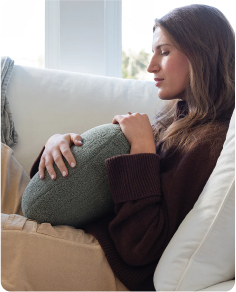
- Mollie P
Making Informed Choices for Your Child’s Safety
Ensuring the safety and comfort of your child is a top priority for any parent. While weighted blankets can provide numerous benefits, they are not safe for every child. It’s essential to follow safety guidelines and consult with a pediatrician before introducing a weighted blanket to your child’s routine.
If you are seeking the calming effects of Deep Pressure Stimulation without the risks of a weighted blanket, consider alternatives like the Original Weighted Pillow by Quiet Mind. It’s available in three weights and has a compact size that’s much more manageable for children. Click here to learn more!
